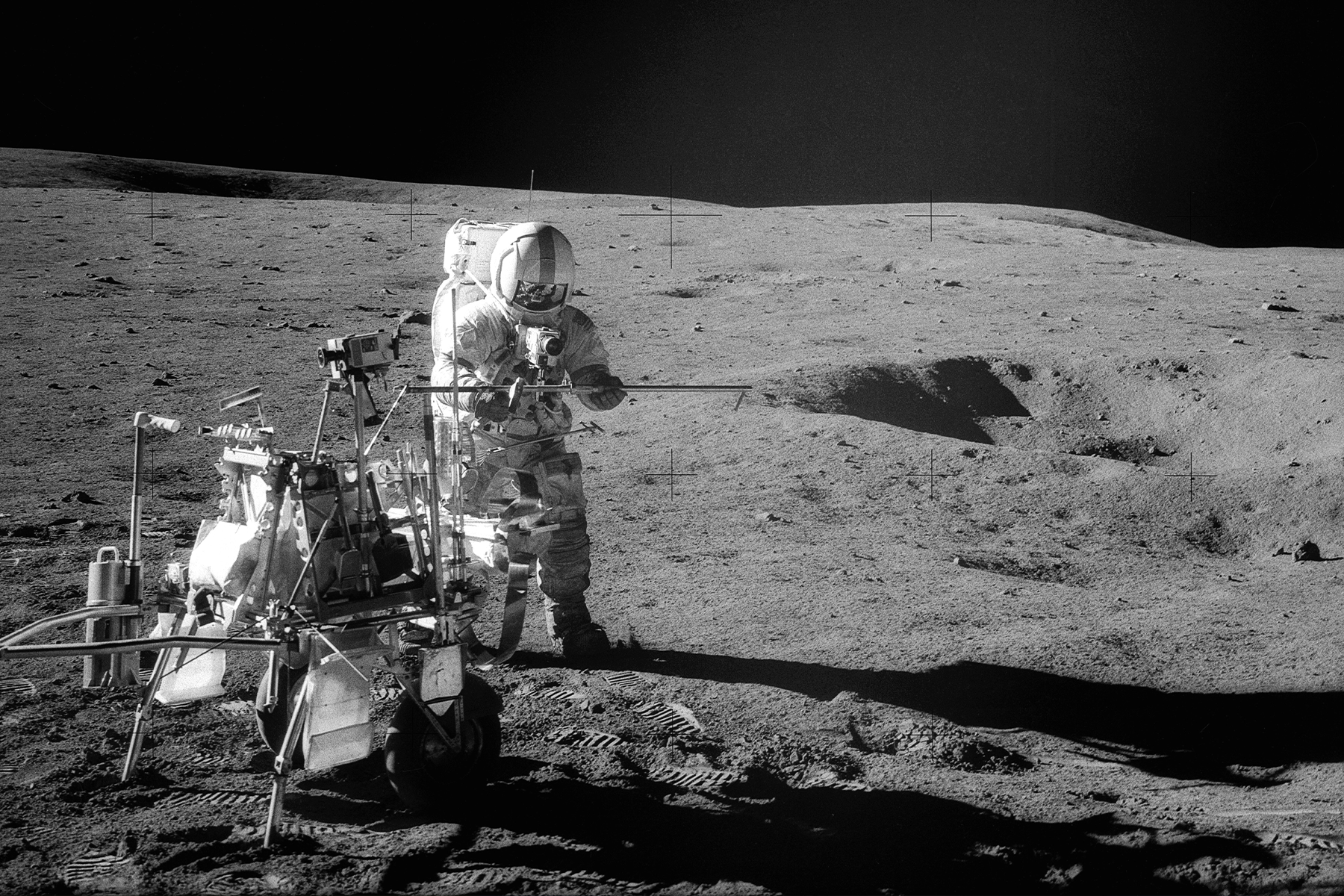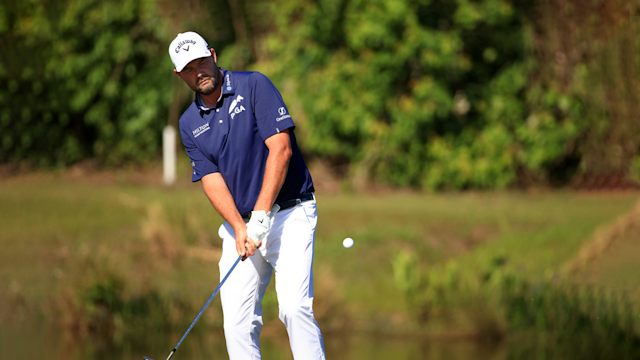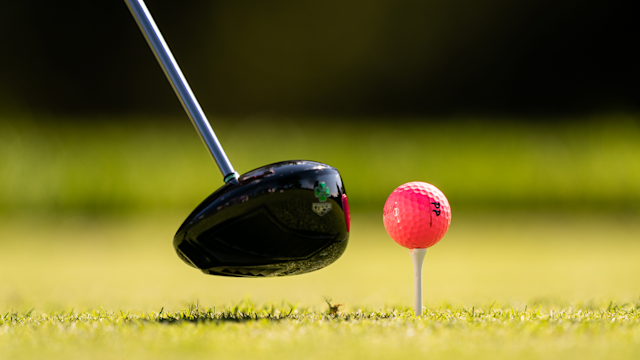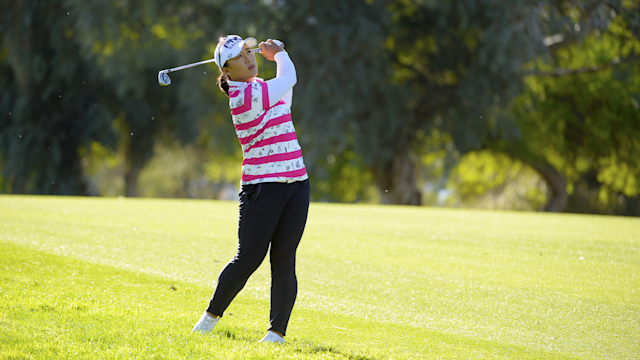Game Changers
Out of this World: The Work Done by NASA Has Helped Change Golf
By Ryan Adams, PGA
Published on

NASA’s work on the moon (above) and other advancements have led to many technological jumps in the golf industry.
Editor’s note: This article originally appeared in the February 2022 issue of PGA Magazine. Infographic courtesy of Kevin O’ Brien/NASA; photos courtesy of NASA and Ping.
To those back on Earth, it was a grainy video clip of an astronaut on the moon making some sort of forward motion.
Little did we know, however, that with a few lunar swipes on Feb. 6, 1971, Alan Shepard was bringing together two of the world’s most unique industries in golf and space – the former, an ancient game revolutionized through the years, and the latter, a novel idea turned into monumental moments of human history.
Shepard and several other astronauts were part the iconic Apollo missions of the late 1960s and early ’70s that did what no one thought was ever possible: Put people on the moon. The National Aeronautics and Space Administration – better known as NASA – was the architect of Apollo, as well as the missions preceding and, now, journeys back to the moon, and beyond, starting in a matter of weeks with the launch of Artemis I.
Scheduled for a launch date on Saturday, Sept. 3, Artemis I will have the propulsion of the Space Launch System (SLS), the world’s most powerful rocket, built by NASA, that has greater payload volume and departure energy than anything previously built.
The SLS rocket’s uncrewed Artemis I test flight – which also includes the Orion spacecraft that will orbit the moon and spend around three weeks in space checking out its systems prior to its return to Earth – will be followed by missions that will see the first woman and first person of color to step foot on the lunar surface, who will gain the knowledge necessary to make the next giant leap of NASA’s space exploration: sending astronauts to Mars.
“When you play golf, you’re always battling the laws of physics – think about what a ball must do just to get airborne. A rocket has to do the same thing on a larger scale. The SLS cheats gravity by producing 8.8 million pounds of thrust just to get to space with the Orion spacecraft, which it sends to the moon.”– John Honeycutt, NASA Marshall Space Flight Center SLS Program Manager
So … where does golf fit into all this, you may ask?

There are similarities between launching a golf ball into the air and sending NASA’s Space Launch System (SLS) rocket on its debut Artemis I mission.
Much like the clutch shots last year of reigning PGA Champion Justin Thomas or KPMG Women’s PGA Champion In Gee Chun, rocket launching takes some thought before executing.
“Hitting a golf ball and launching a rocket have more parallels than you might think,” says Mike Bolger, the Program Manager for NASA’s Exploration Ground Systems at John F. Kennedy Space Center in Cape Canaveral, Florida. “Determining the power and trajectory needed to launch a rocket weighing 5.5 million pounds out of Earth’s atmosphere is mathematically similar to a golfer choosing the right club and creating the right launch angle.”
To help bring the connections to life, NASA Art Director Kevin O’ Brien created a unique infographic (above) showing how similar the launch of a golf ball is versus the SLS used for missions like Artemis I. From force and thrust to speed and mass, it’s easy to see the connections between two uniquely different liftoffs.
“Hitting a golf ball and launching a rocket have more parallels than you might think.” – Mike Bolger, NASA Exploration Ground Systems Program Manager
Another interesting link is the amount of innovation created by NASA that’s being used in golf equipment.

Ping’s Marty Jertson, PGA, has used NASA’s findings to design equipment faster and more accurately.
Marty Jertson, the PGA VP of Fitting & Performance for Ping in Phoenix, Arizona, has incorporated NASA’s technology advancements on multiple fronts to make products better, and make them faster.
“The advent of robotics, 3D printing and virtual prototyping allow us to be more accurate in our predictions,” explains Jertson. “A great example is the G425 driver and hybrids, with their Spinsistency technology. We didn’t have to use any physical prototypes, and did it virtually in days and weeks versus months. That innovation was developed from the work NASA does every day.”
As an engineer, Jertson sees several similarities between his work at Ping, and what Honeycutt and Bolger are doing at NASA.
“We’re both trying to get a payload from Point A to Point B in the most precise way possible,” he adds. “Launch monitors, radar systems, metals, alloys, aluminums and aerodynamic optimization are used in rocket launches, but they’re also a part of manufacturing techniques to develop golf clubs. We both need to be experts at ballistics if we want a successful launch.”
“I think we should strive to set the bar high like NASA, and be just as inspirational.”– Marty Jertson, PGA
A much younger Jertson watched old videos intently as Shepard and other astronauts traversed around the moon. He was inspired by what he saw, and that likely played a role in a successful career at Ping for the five-time PGA Championship participant.
Now, with missions back to the moon and beyond coming soon, he sees himself and other PGA Members as the people who can inspire.
“Everyone looks up to NASA. For someone like myself as an engineer, they’re a staple organization because of what they’ve accomplished,” says Jertson. “PGA Members can lead and shepherd the game to new heights in the way NASA has done, and is doing, for the space industry. I think we should strive to set the bar high like NASA, and be just as inspirational.”
To get more details on NASA’s SLS and the Artemis I launch, visit https://www.nasa.gov/artemisprogram.




